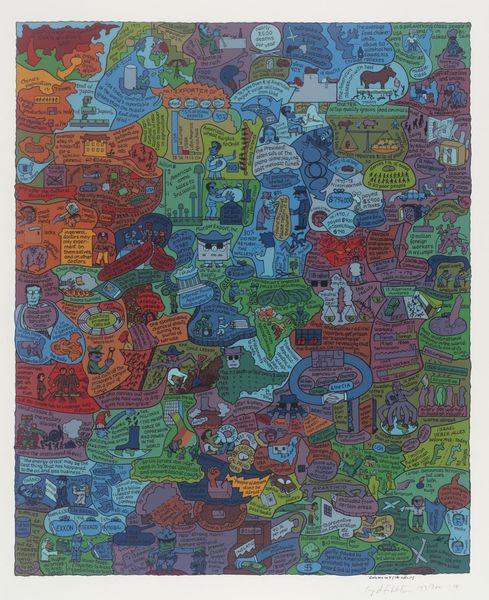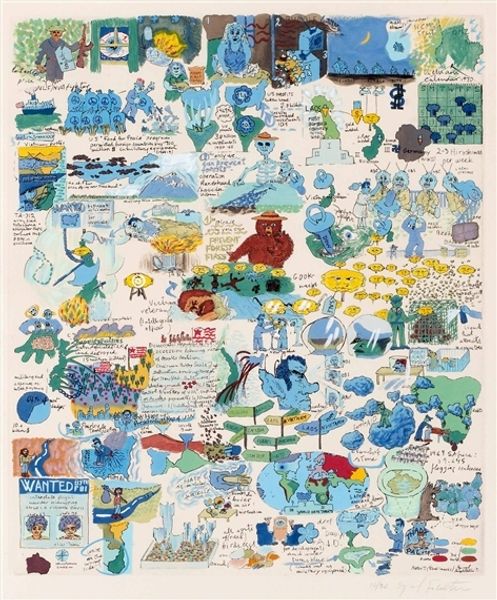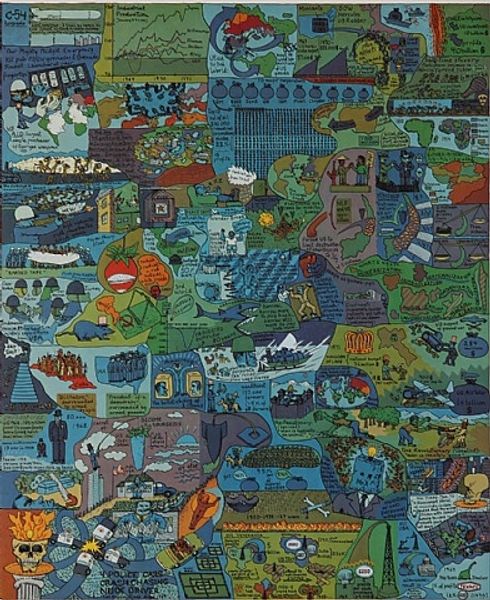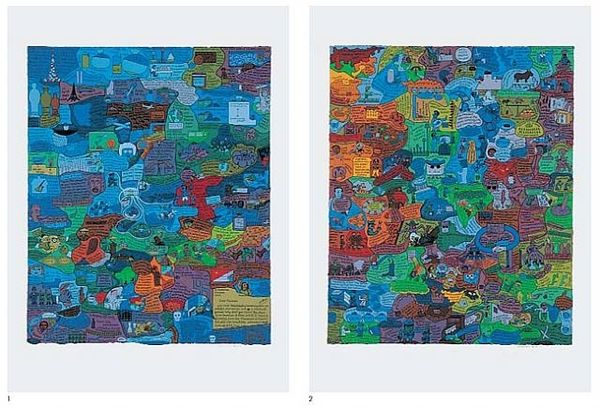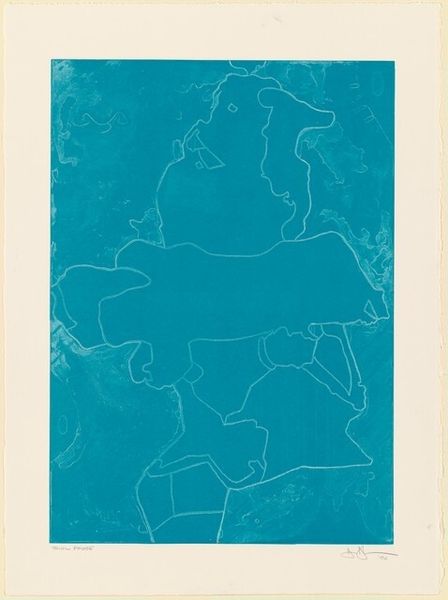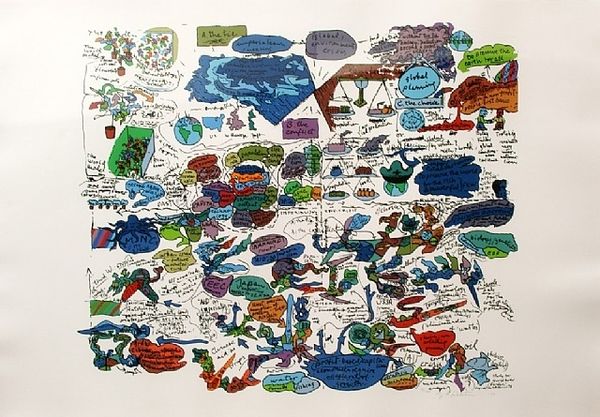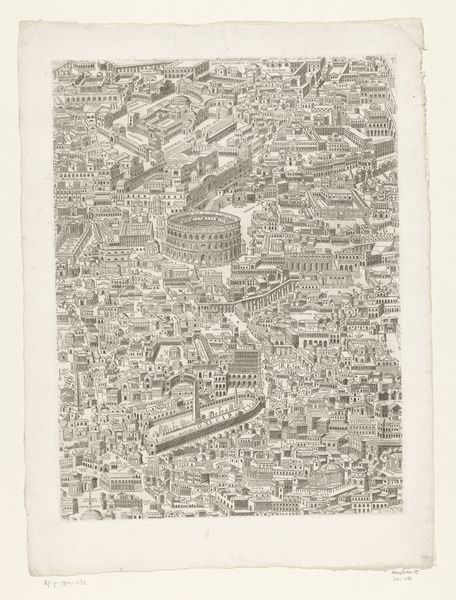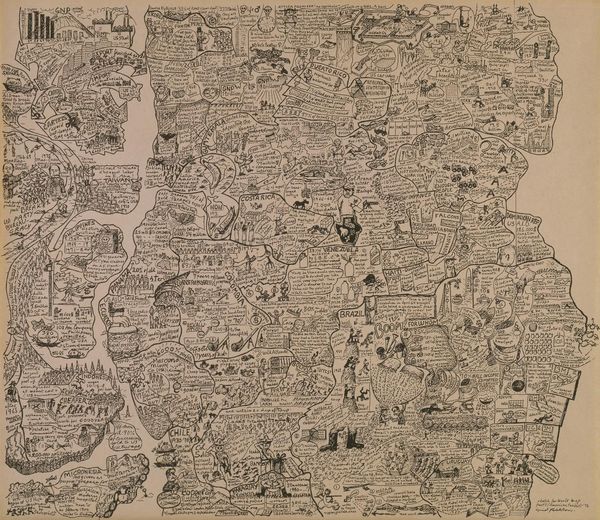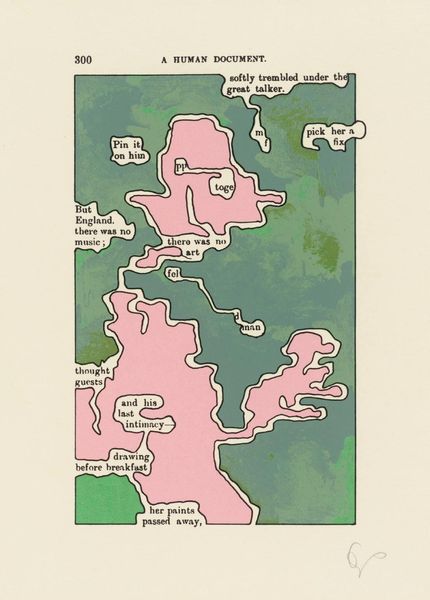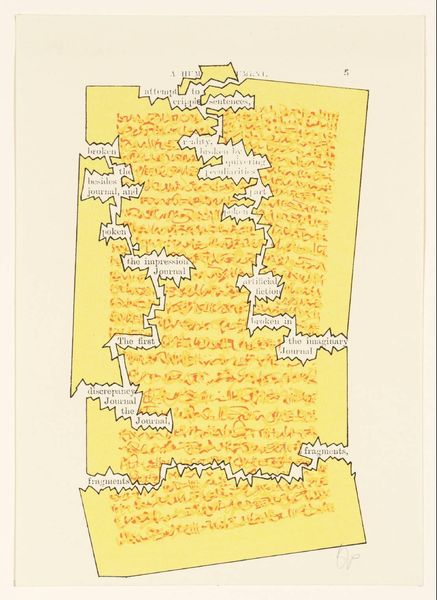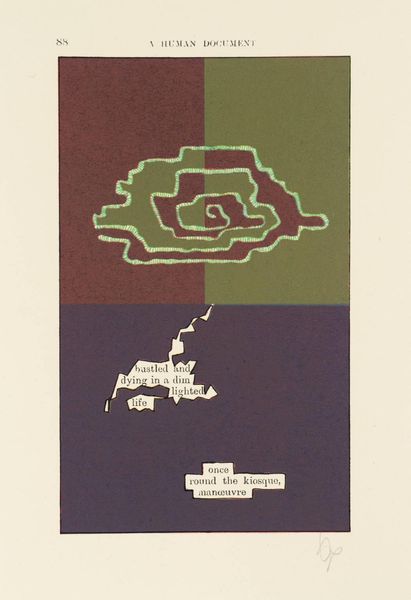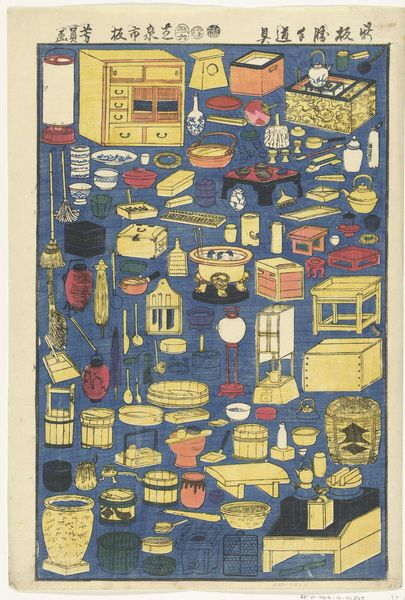
Dimensions: image: 585 x 482 mm
Copyright: © All Rights Reserved, DACS 2014 | CC-BY-NC-ND 4.0 DEED, Photo: Tate
Editor: Oyvind Fahlstrom’s “Column no. 2 (Picasso 90)” is teeming with figures, shapes, and words. It feels like an overwhelming stream of consciousness. What symbols stand out to you in this piece? Curator: The dense layering itself is symbolic, echoing our bombardment with information. Note the recurring motifs – the Eiffel Tower representing Paris, juxtaposed with economic data. Do you see how Fahlstrom creates a dialogue between cultural icons and socio-political commentary? Editor: I do. It’s like he’s mapping cultural memory onto a single plane, making us question their relationship. Curator: Exactly. He challenges us to decode the visual language of our time and how these symbols shape our understanding of the world.
Comments
tate 8 months ago
⋮
http://www.tate.org.uk/art/artworks/fahlstrom-column-no-2-picasso-90-p78631
Join the conversation
Join millions of artists and users on Artera today and experience the ultimate creative platform.
tate 8 months ago
⋮
Column No.2 (Picasso 90) is one of a series of screenprints Fahlström made in the early 1970s. These prints use dense text, bright colours and cartoon-like illustrations to critique America’s military and economic expansion in the early 1970s. There are three elements in the title: ‘Column’, the series title, refers to the newspaper columns Fahlström regularly wrote for the Swedish press (these paintings on paper transferred to silkscreen prints are an extension of his literary efforts); ‘No.2’ refers to the place of this print within the series; while the bracketed caption ‘(Picasso 90)’ refers to the occasion for which the print was commissioned – Pablo Picasso’s ninetieth birthday. Column No.2 (Picasso 90) is a relatively large edition of 120 copies. Another print in the series, Column No.4 (IB-affair) (Tate P78632), was produced in a larger edition of 300.
